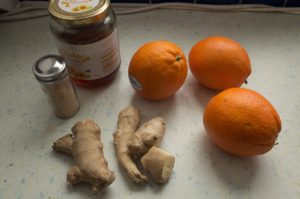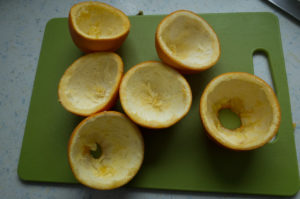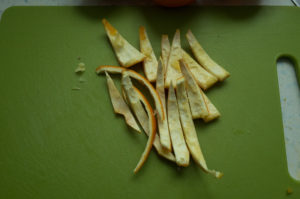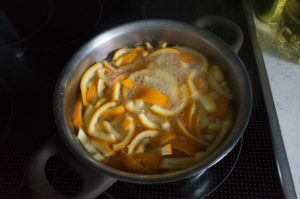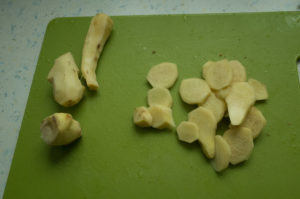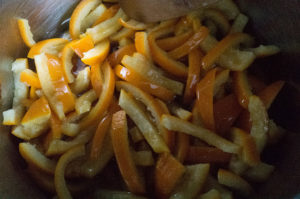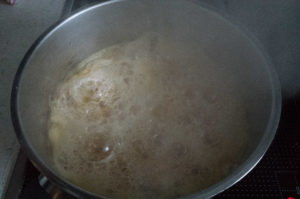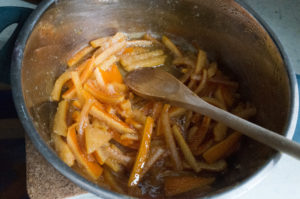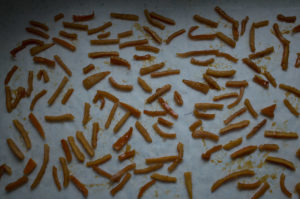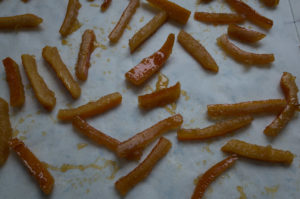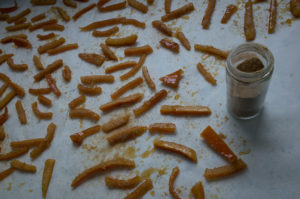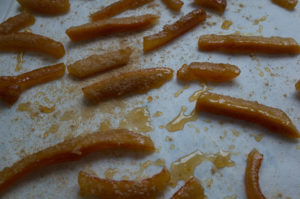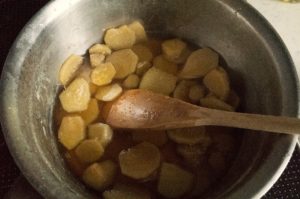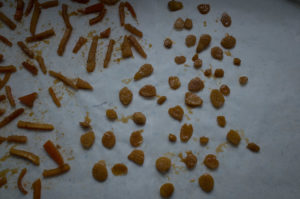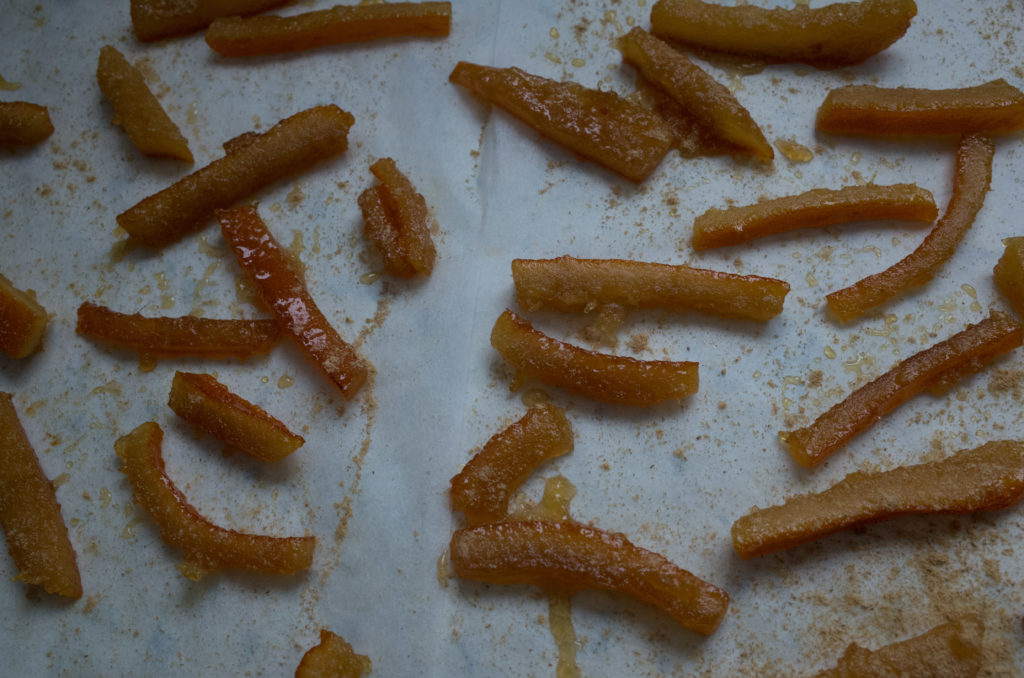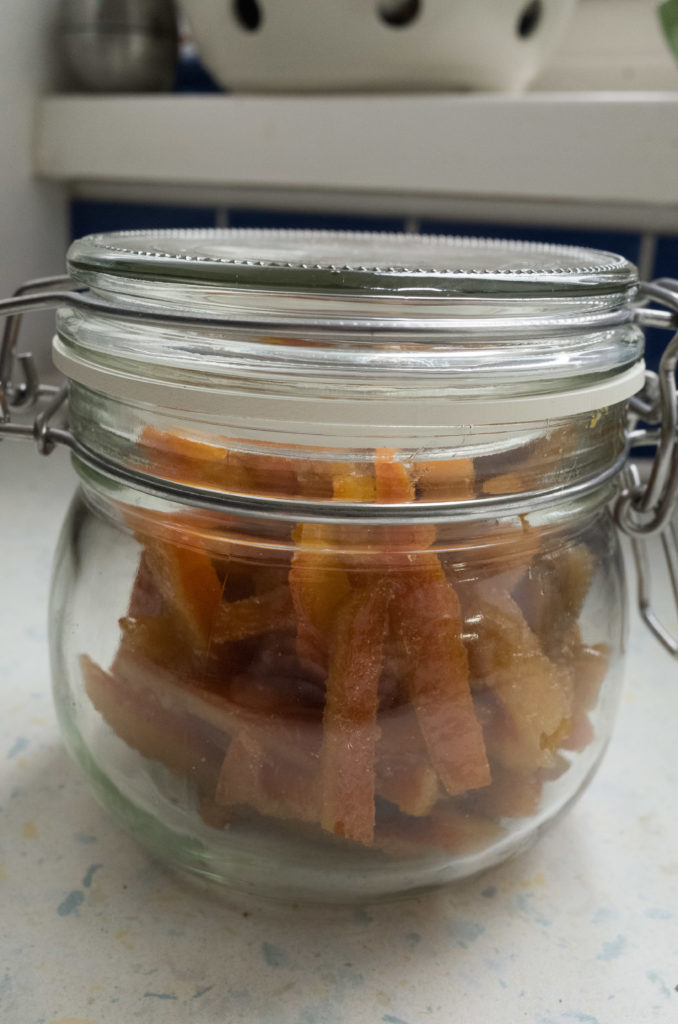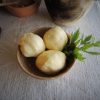Candied Orange peel from the Menagier of Paris
Since it is the time of year when you find a lot of oranges, I thought, I would try this recipe that I found in the Menagier de Paris.
And I had gingerroot left over as well, so I took the chance to candy the ginger as well.
What you need:
2-3 oranges, 2 pieces of ginger
1/2 kg of honey
Powdered ginger
Water
First I juiced the oranges for a glass of delicious orange juice for my husband. Then I scraped the flesh out with a spoon and cut the peels into narrow stripes.
They looked kind of flat then. That changed during cooking them in water. I left them boiling for about 45 minutes. The original recipe says to soak the peels in water for over a week and change the water every day. Probably due to the original recipe being for bitter orange peels and the long soaking takes the bitterness out. With modern oranges, the cooking should suffice.
In the meantime, I peeled and cut the ginger.
I poured the orange water into the sink and set up the ginger for cooking. Then I put the oranges in a pot with app. 1/4 kg of honey and a dash of water, so that the oranges are just swiming in this honey-sirup.
I left it to cook until the peels were almost see through and the honey has almost cooked down to the bottom. But take care! If the honey has come to that point, it is likely to burn, so keep stiring lightly and take of the heat when it starts to smell very caramel-like.
Then I spread the peels on a sheet of baking paper. On the right you can see how the peels are kind of see-through.
Dann verlangt das Rezept noch danach, die Schalen mit getrocknetem Ingwer zu bestreuen.
Then I did the same with the ginger. And holla! The ginger is very spicy!
The peels look really tasty and they also taste lovely! Now they only needed to cool and dry a bit. I stored them in an air tight glass in the fridge. and one part I put in the freezer.
And what can you do with them? Well they are very nice just on their own, maybe on a plate of desserts. But I could also imagine it cut and in homemade marzipan, fine breakfast porridge, on top of freshly whipped cream, in sweet bakery (fruit bread), on greek rice, in gingerbread or in Philipine Welsers egg-snowflocks. And of course you can use them in modern kitchen as well. I love them dipped in chocolate!
Zum Weiterlesen:
Ein interessanter Artikel zum Thema Zitrusfrüchte in der europäischen Geschichte
Related Posts
The following posts might interest you as well:




